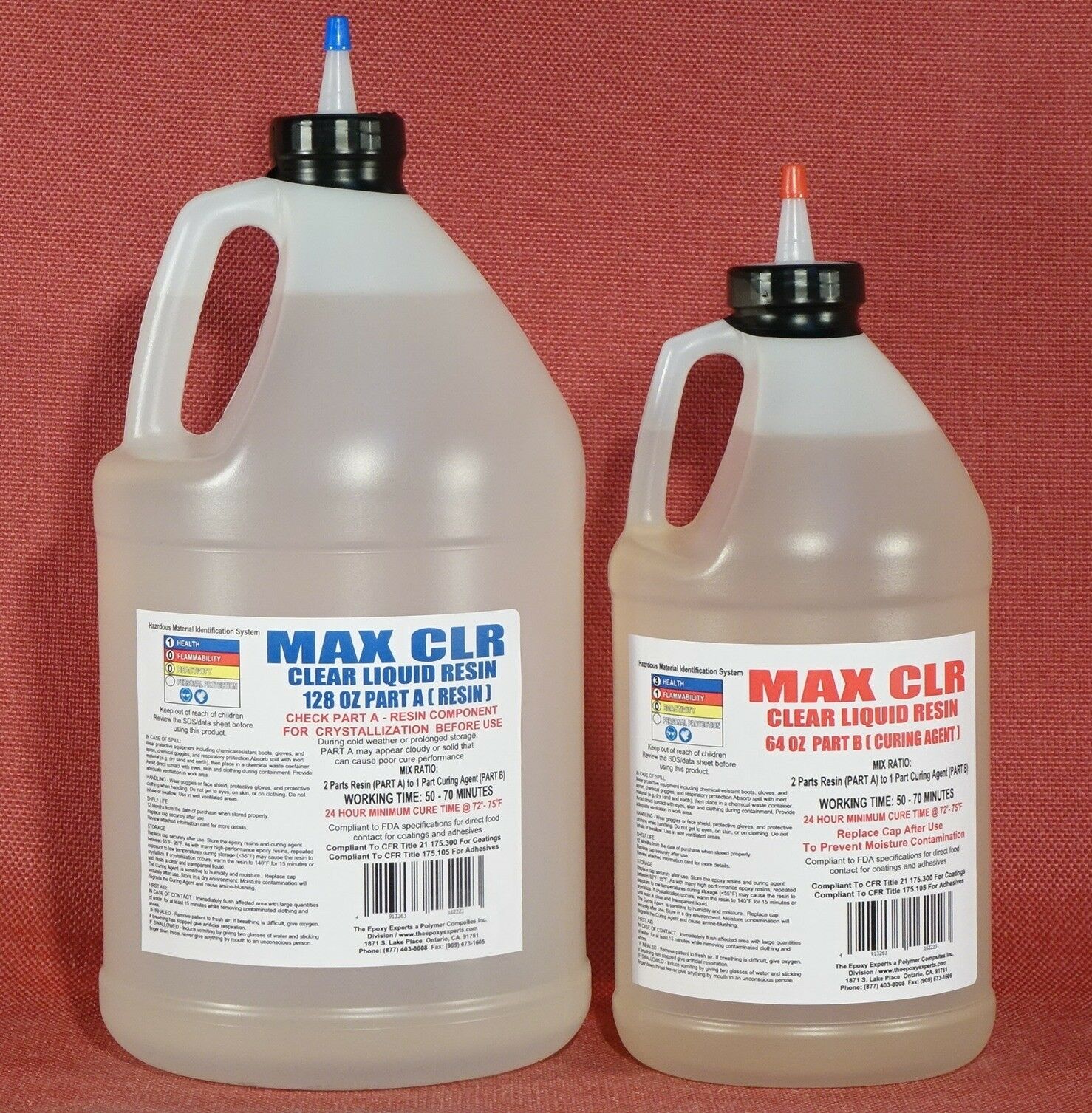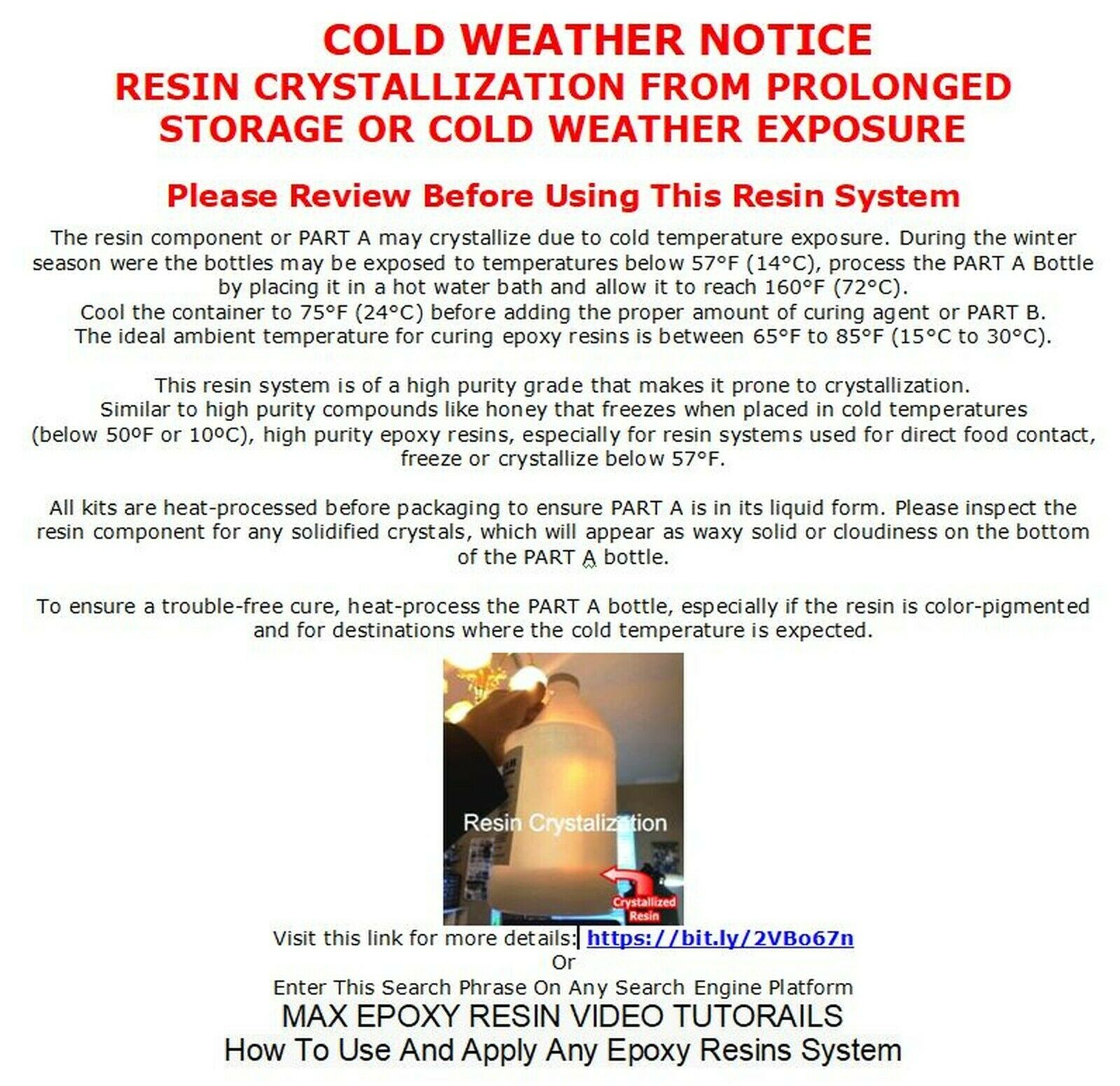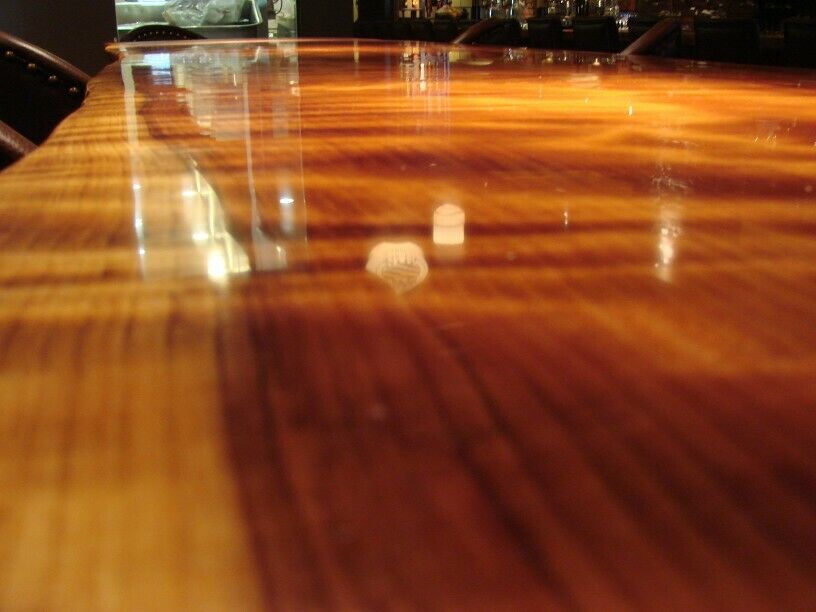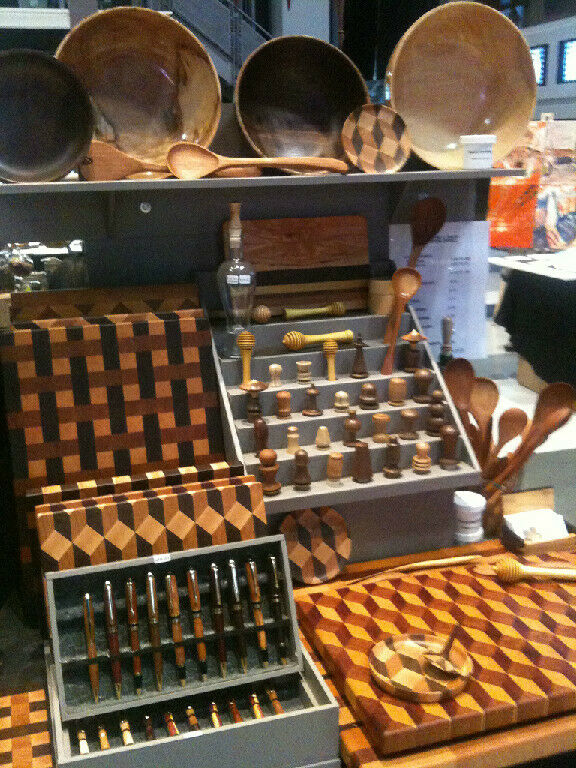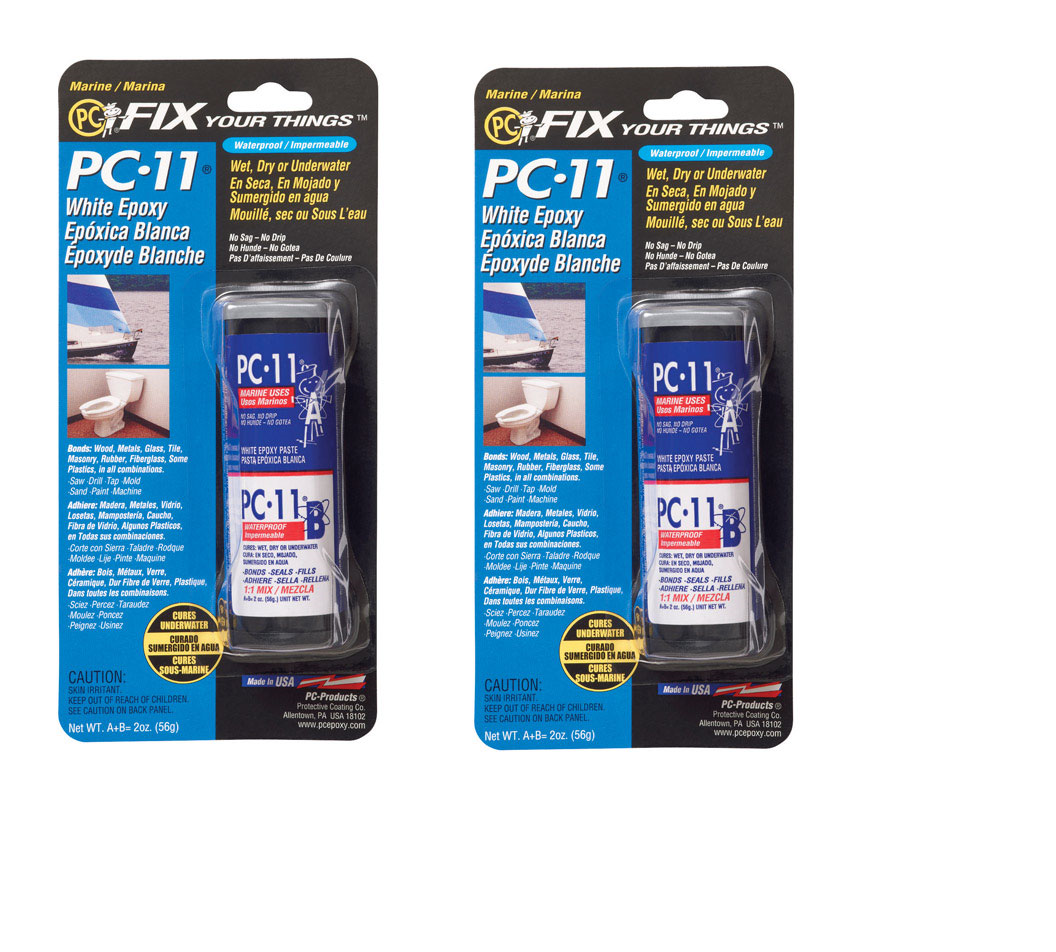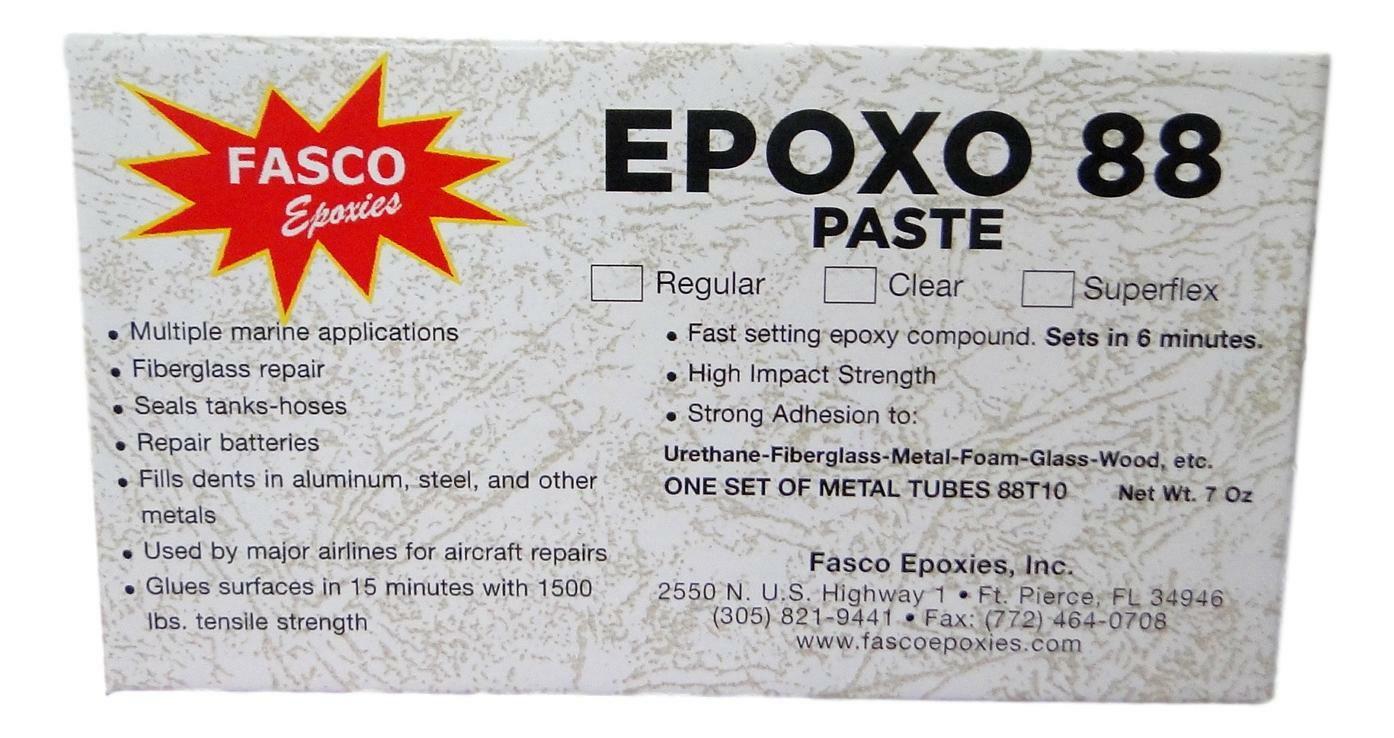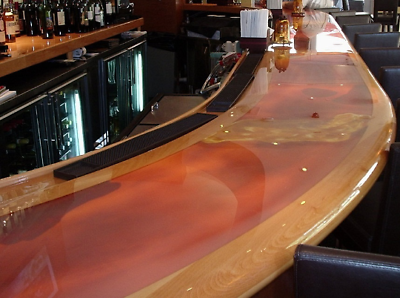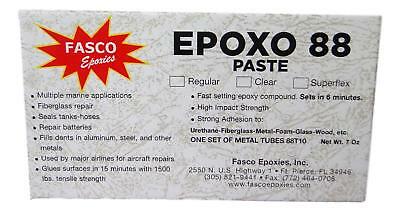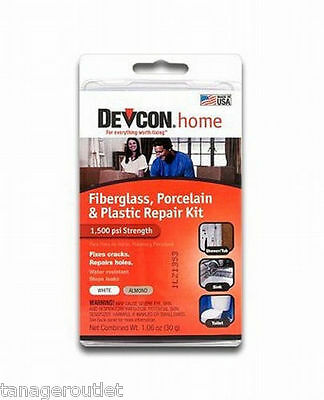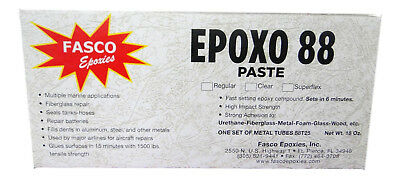-40%
EPOXY RESIN CRYSTAL CLEAR FOOD SAFE 4 COATING BAR TOPS COUNTERTOPS -VOID FILLING
$ 55.75
- Description
- Size Guide
Description
MAX CLR A/BCLEAR LIQUID RESIN
FDA
Compliant For Direct Food Contact Coating And Bonding
1 Gallon MAX CLR PART A (Resin)
And
1/2-Gallon MAX CLR PART B (Curing Agent)
(1.5 Gallons Combined Volume)
DESCRIPTION
MAX CLR A/B is a two-component epoxy resin system that is produced in accordance with FDA regulations intended for direct food contact coatings and adhesive applications.
MAX CLR A/B is a thermoset polymer resin that cures with high clarity that demonstrates high chemical resistance against acid and basic compounds.
Its cure mechanical properties yields the optimum balance of strength and toughness, yielding high impact properties with less tendency to shatter.
Click Play To View Impact Resistance Test
MAX CLR IMPACT RESISTANCE TEST
Video will open in a new window
Using the eBay App? Paste link into a browser window:
[isdntekvideo]
It is safe to use as a barrier coating against grain alcohol and MAX CLR can withstand brief contact with hot fluids (up to 187 °F) such as coffee, tea, and soups.
The primary purpose of the MAX CLR resin system is to create an impermeable and sanitizable coating that demonstrates low extractable of its chemical constituents during direct food contact.
The cured coating creates a durable barrier to seal porous substrates, such as wood, ceramic, shaped minerals or 3D printed plastics that prevents absorption of fluids or organic compounds.
MAX CLR coated surfaces suppresses bacterial colonization or microbial growth while demonstrating an aesthetic.
It is a common product used by woodworkers and parts designers to fabricate unique pieces with functional durability.
All components used to formulate the MAX CLR resin system are listed in the Code of Federal Regulations,
For Coatings Applications
https://www.accessdata.fda.gov/scripts/cdrh/cfdocs/cfcfr/CFRSearch.cfm?fr=175.300
For Adhesives Application
https://www.accessdata.fda.gov/scripts/cdrh/cfdocs/cfcfr/CFRSearch.cfm?fr=175.105
IMPORTANT GUIDELINES FOR FOOD CONTACT APPLICATIONS
For food contact applications, MAX CLR A/B must be fully cured to ensure no chemical leaching can occur when foodstuffs' come in contact with the cured resin system.
Any uncured chemical compounds caused by improperly prepared MAX CLR may be extracted and cause cross-contamination or leaching during food contact.
Please review the following and to avoid any curing problems.
Please read the following information regarding factors that can highly affect the MAX CLR cured performance.
COLD TEMPERATURE RESIN CRYSTALLIZATION
The high purity nature of the resin formulation makes it prone to crystalizing when exposed to temperatures below 57°F.
During the colder season, the resin component or PART A may crystallize during shipping. It can also occur after the container has been stored in an uncontrolled environment.
Crystallized resin appears as an opaque white mass on the bottom of the bottle.
HEAT PROCESSING TO REVERT RESIN CRYSTALIZATION
With the cap securely in place, place the PART A container in a hot water bath (160°F) until the contents are revert back to its liquid state and optically transparent.
Cool the PART A bottle to 75°F and the mix the proper amount of PART B curing agent. (see STEP 2)
USE AND APPLICATION
Precondition both bottles to 75°F and measure the components accurately at a 2:1 mix ratio; 100 parts resin to 50 parts curing agent.
The use of a weighing scale is recommended over volumetric measuring.
Any off-ratio excess of either the resin or curing agent can cause poor cure results and cause excessive chemical leaching that can transfer to the food or beverage.
The substrate must be suitable and prepared for the intended purpose of the application.
Remove any contaminants that may interfere with the complete cure of the MAX CLR resin system.
Exclude the use of materials and components not suitable for food contact (lead-based pigments, harsh cleaners, and unsanitary conditions).
PROPER CURING
Allow the applied resin to fully cure for a minimum of 48 hours at 75°F before exposing the coating to any foodstuffs.
A short heat post cure at 150°F for 60 to 90 minutes will ensure the resin is fully cured.
Rinse the cured coating with warm water and mild detergent before allowing any food contact.
STORAGE
Secure caps for both bottles and store above 65°F minimum temperature to prevent re-crystallization.
The resin system will remain viable for 12 months or longer.
DETAILED GUIDE ON HOW TO USE THIS RESIN SYSTEM
Review All Published Data Regarding This Product.
Proper Usage Data And Other Detailed Information Are Posted At This Page.
Mix the Resin And Curing Agent Only After The Surface Is Prepared For Application.
STEP 1. SURFACE PREPARATION
The quality of adhesion of any coating or adhesive application is dependent on how well the surface is prepared.
The resin system must be able to properly 'wet-out' the surface to form a continuous film.
Surfaces demonstrating poor wettability prevents the liquid resin from forming a cohesive bond.
Improper surface wetting yields poor adhesion and will delaminate during use.
Wetting is the ability of a liquid to interfaces or wet-out a solid surface; its dynamics is expressed as surface tension.
A surface that demonstrates low surface tension, such as waxed surface, oily surface or slick plastics like Teflon will prevent the liquid resin to wet-out and cause poor adhesion.
In the same respect, if the surface is coated from a previous application, the epoxy adhesion is limited to adhesion quality of the primary coating is applied over.
Make sure to remove any loose or peeling old coating before application to avoid delamination.
If possible remove the old coating by mechanical sanding or power washing so the applied epoxy is in direct contact with the base substrate.
Do not apply the coating over oil-based stain as this will cause 'crawling' or dewetting.
Lightly sand the surface until the surface tension of the treated wood is adequate for coating.
View the following video to determine if the surface is suitable for mixed resin application.
Why Epoxy Coatings Bead Up And Separate. Testing And Surface Preparation Before Epoxy Application.
Video will open in a new window
Using the eBay App? Paste link into a browser window:
[isdntekvideo]
The Following Surface Preparation Procedures Are Recommended.
METALS AND CONCRETE
Degrease Metals– Wipe surface with lint-free rag dampened with Methyl Ethyl Ketone (MEK) or acetone to remove all oil, dirt, and grease.
Degrease Concrete- Use 2 cups of TSP (trisodium phosphate) detergent per 5 gallons of hot water and scrub with a stiff deck brush. Rinse with water and allow to dry.
Etch Metals – For optimum results, metal parts should be immersed in a chromic acid bath solution consisting of:
Sodium Dichromate
4 Parts By Weight
Sulfuric Acid
10 Parts By Weight
Water
30 Parts By Weight
The solution is held at 160°F (71°C), and the parts left immersed for 5 to 7 minutes. Rinse – remove metal parts from etching bath and rinse with clean water. (distilled water is recommended).
Etch Concrete- Use commercially sold concrete etching solution (hydrochloric acid based works best). Neutralized per instructions, rinse and allow to dry thoroughly.
ALTERNATE PROCEDURE
Degrease, scour and dry – Often etching as outlined above is not practical. The metal surfaces may be cleaned by degreasing as noted above, scouring with an alkaline cleanser followed by rinsing and drying.
Degrease and dry – Degrease the surface as noted above, sand or sandblast the surface lightly but thoroughly. Rinse with acetone or Methyl Ethyl Ketone (MEK), and dry.
GLASS
Degrease – With MEK as above, or with a strong boiling solution of a good grade household detergent.
Etch – For optimum results, degreasing can be followed by the chromic acid bath outlined above.
WOOD
Sand – Bonding surfaces should be sanded lightly, but thoroughly to remove all external contamination.
Clean – Carefully remove all dust, or particles of wood from sanded areas. A stiff and clean brush or compressed air can be used.
PLASTIC
Clean – Remove all dirt, oil, or other surfaces contaminated with detergent soap or degreasing solvent and water, followed by thorough rinsing and drying. A solvent that does not have a detrimental effect may also be used.
Sand – Surfaces to be bonded should be sanded lightly, but thoroughly to remove surface sheen.
Clean – Carefully remove all dust or particles of plastic from the sanded area. A clean brush, lint-free cloth, or compressed air may be used.
STEP 2. CHECK THE PART A OR RESIN BOTTLE FOR CRYSTALLIZATION
During the winter months, the PART A or RESIN component may crystallize and cause poor cure performance.
Our MAX Epoxy Resins are formulated with high purity grade resin polymers which makes it prone to crystallization when exposed to temperatures below 57°F.
Crystallization can also occur after the resin has been stored over a period. It will appear as a waxy white mass at the bottom of the bottle.
The PART A or RESIN component must be in its liquid form to thoroughly mix with the PART B or curing agent to achieve full cure.
DO NOT USE UNLESS PROCESSED
View the following video for identification and processing.
STEP 3. DETERMINE THE AMOUNT THE BATCH SIZE NEEDED
Blending amounts larger than 1000.0 grams or 1 quart in volume requires careful application.
Make sure to use and apply the mixed resin within the established working time to prevent exothermic "runaway" reaction.
Do not let the mixed resin to sit in mass longer than 10 minutes.
The heat generated during polymerization will accelerate the chemical reaction and cause a 'runaway' reaction to occur.
A runaway reaction can produce temperatures above 300°F that can cause serious burn injuries and outgas noxious fumes.
Mix the proper amount of resin and curing agent and apply within 10-15 minutes to avoid premature curing and high exothermic heat from occurring.
Calculate the amount to be mixed by measuring the length x width x thickness of the area to be coated to obtain the cubic volume of the resin needed.
Use These Factors To Convert Gallon Needed Into Volumetric Or Weight Measurements.
Fluid Gallon To Volume Conversion
1 Gallon = 231 Cubic Inches
1 Gallon = 128 Ounces
1 Gallon = 3.7854 Liters
1 Gallon = 4 Quarts
1 Gallon = 16 Cups
Fluid Gallon Mass Conversions
1 Gallon Of Mixed Unfilled Epoxy Resin = 9.23 Pounds
1 Gallon Of Mixed Unfilled Epoxy Resin = 4195 Grams
PRESEALING THE WOOD TO ELIMINATE BUBBLE OUTGASSING
Applying the MAX CLR on a porous surface, such bare wood, take into account that the coating will be absorbed.
Mix a batch of the MAX CLR and apply it onto the
wood substrate and allow this application to cure until it has set dry to the touch.
Some grain raising will occur, which can be sanded once the first application cures.
Allow to cure for 16 hours at room temperature.
Upon cure, lightly sand the surface to remove 'grain-raising'.
Clean the surface to remove sanding debris
The surface is ready for the next coating application.
The coating thickness is a big factor that dictates resin coverage.
For protective coatings, a minimum coating thickness of 0.010-inch or 10 mils is recommended.
Thicker coating thickness up to 0.500 mils or 1/2 inch per can be applied.
However consider the exothermic heat the resin produces when cured in a concentrated mass.
The larger the mass the higher the exothermic temperature is generated
To calculate coating thickness of 0.010-inch or 10 mils is recommended.
Calculation: 1608 / 10 = 160.8 Square Feet 1 Gallon Coverage
For high-build or thick casting of 1/2 inch (500.0 mils)
Calculation: 1608 / 500 = 3.21 Square Feet 1 Gallon Coverage
STEP 4
.
MIXING PROCEDURE
The two components must be mixed thoroughly to eliminate problems such as tacky or uncured spots.
Use the "two container method" as demonstrated in this video demonstration, which ensures a homogenous mixture of the resin and curing agent.
PROPER MIXING TECHNIQUE
How To Mix Epoxy Resin For Food Contact Coating. Avoid Tacky Spots, Minimize Air Bubble When Mixing - YouTube
Video will open in a new window
Using the eBay App? Paste link into a browser window:
[isdntekvideo]
STEP 5.
APPLICATION DEMONSTRATIONS
Condition the ambient temperature to 75
°F
for best results.
Ensure that the work area is dust free and well ventilated. MAX CLR is self-leveling and will continue to flow until polymerization converts it to solid phase.
MAX CLR can be applied by using a bristle or high density foam brush/roller, or poured into place.
MAX CLR is self leveling and it will continue to flow until the liquid resin converts to a solid plastic.
Ensure the surface is level and secure any leaks by using tape to create a temporary patch and prevent leakage.
Tabletop Coating And Embedding With MAX CLR
Video will open in a new window
Using the eBay App? Paste link into a browser window:
[isdntekvideo]
Pour Application
Commercial Restaurant Table Top - Repurposed Wood From Bowling Lane
HOW TO APPLY EPOXY RESIN ON TABLE TOPS COUNTER TOPS BARTOPS
Video will open in a new window
Using the eBay App? Paste link into a browser window:
[isdntekvideo]
Multiple Application Technique
Epoxy Multiple Pouring For Thick Coating Application
Video will open in a new window
Using the eBay App? Paste link into a browser window:
[isdntekvideo]
ROTO-COATING OF MAX CLR ON WOOD TURNED BOWL
Click Window To Watch Video Demonstration
To achieve the good cure results, the ambient temperature and humidity condition should be between 75
°F
to 85
°F
and the relative humidity is below 80%.
The colder the temperature the longer takes to fully cure.
MAX CLR will cure at cold temperature and will dry to the touch after 16 to 24 hours, however, full cure can take up to 3 days.
Use an infrared lamp to warm the ambient temperature. Infrared lamps also work well for warming large work areas.
Rinse the cured coating with warm water and mild detergent before use.
A Curing Oven Works Well For Process Curing.
Unlike home ovens, these are industrial grade ovens that delivers temperature setting accuracy.
CUTTING AND POLISHING
Allow to fully cure for 48 hours before polishing or machining. MAX CLR can be cut, ground or CNC or lathe machined to shape.
Polishing improves scratch resistance. The transparency is also restored after machining by wet sanding and then p
olish with abrasive free wax or polish.
Transparent Clear Knife Scale With MAX CLR A/B
Video will open in a new window
Using the eBay App? Paste link into a browser window:
[isdntekvideo]
Click on the picture to view test video. The video will open in a new window.
MAX CLR CUT AND POLISHED
Video will open in a new window
POLISHING
Click on the picture to view test video. The video will open in a new window.
HOW TO POLISH EPOXY COATED TABLE TOP COATINGS
Video will open in a new window
DEGLOSSING
Once the MAX CLR fully cures, deglossing the surface to create a satin finish can be easily done using an abrasive pad.
In this demonstration, a
SCOTCHBRITE
pad was used to de-gloss the surface.
Note the dramatic decrease in gloss after a light polishing with the abrasive pad. Very-fine sandpaper (wet-sanding) also works well.
PHYSICAL AND MECHANICAL PROPERTIES
Viscosity
Density
Form and Color
800 – 1,200 cPS @ 25°C Mixed
1.10 g/cc
Clear Transparent Liquid
Mix Ratio
2:1 (PART A To PART B)
100 Parts Resin to 50 Parts Curing Agent
By Weight Or By Volume
Working Time
45 Minutes @25°C (77°F 100-gram mass)
Peak Exotherm
70°C (158°F, 100-gram mass)
Handle Time- Tack Free
Full Cure Time
6 to 8 Hours @ 25°C (75°F)
36 Hours minimum @ 25°C (75°F)
Hardness
78 ± 5 Shore D
Tee-Peel Strength
5.7 Lbs per inch Width
Tensile Shear Strength
1,300 psi @ 25°C (77°F)
800 psi @ -80°C (-112°F)
550 psi @ 100°C (212°F)
Elongation
9.0% @ 25°C (77°F)
Compressive Strength
2,200 psi
Heat Distortion Temp
80°C (176°F)
HOT WATER IMMERSION TEST WOOD COATED MUG
MAX CLR A/B HOT WATER IMMERSION TEST
Video will open in a new window
Color Addition
Use the MAX COLOR PIGMENT PASTE to add colors to any epoxy-based resin system. The
MAX COLOR PIGMENT PASTE is made specially for epoxy resins.
The carrier resin is epoxy functional that crosslinks with the MAX CLR resin system and prevent extraction.
Other colorants are not epoxy functional that can cause chemical extraction when it comes in contact with foodstuffs and grain-alcohol.
MAX COLOR PIGMENT PASTE KIT
5 Colors In One Convenient Kit
Black - White - Red - Yellow - Blue
2 Ounces Per Color Concentrate
Includes 5 Yorker Caps For Easy Dispensing
Click The Link To View The Description Page For detailed Use Information
https://www.ebay.com/itm/311946633043
High Color Pigment Concentration
Precision Milled For Uniform Color Dispersion
Specially Formulated For Epoxy Resin Compatibility
Complies With FDA Mandates For Food Contact Applications
MAX COLOR PIGMENT PASTE are concentrated color paste additives used to add color to any of our MAX Epoxy Resin Systems.
It is a highly concentrated color paste that exhibits strong color saturation and excellent colorfastness.
Each MAX COLOR PIGMENT PASTE is comprised of high-quality powder color pigments dispersed in an epoxy resin to create a dispersible pigment paste that can be added to any epoxy resin system.
It is processed through chromium hardened grind roller mill for absolute dispersion and color uniformity.
This special processing breaks down pigment agglomerates into individual micron particles.
Special additives are also added to prevent agglomeration and to increase opacity and color quality.
The MAX COLOR PIGMENT PASTE will not leach or bleed off making it suitable for protective, decorative coatings and casting applications.
All colors are compliant to FDA CFR 175.105 And CFR 175.300 for direct/indirect food contact for coatings and adhesives application.
MAX CLR A/B AVAILABLE KIT SIZES
24 OUNCE KIT
https://www.ebay.com/itm/222623963194
48 OUNCE KIT
https://www.ebay.com/itm/311947320101
96 OUNCE KIT
https://www.ebay.com/itm/222625329068
96 OUNCE KIT
https://www.ebay.com/itm/222625338230
1.5 GALLON KIT
https://www.ebay.com/itm/222626972426
PLEASE CHECK OUT OTHER AVAILABLE
RESIN SYSTEMS AT OUR eBay STORE
For our complete listing, please
Visit our eBay store!
DON'T FORGET OUR EPOXY MIXING KIT
Click The Link To Add To Order
https://www.ebay.com/itm/222623932456
EVERYTHING YOU NEED TO MEASURE, MIX, DISPENSE OR APPLY
Proportioning the correct amount is equally as important to attain the intended cured properties of the resin system.
T
he container in which the epoxy and curing agent is mixed is an important consideration when mixing an epoxy resin system.
The container must withstand the tenacity of the chemical and must be free of contamination.
Most epoxy curing agent has a degree of corrosivity, as a general practice, protective gloves should be worn when handling chemicals of the same nature.
MIXING KIT CONTENTS
1 Each Digital Scale -Durable, Accurate Up To 2000.0 Grams
4 Each 32-ounce (1 Quart) Clear HDPE Plastic Mix Cups
4 Each 16-ounce (1 Pint) Clear HDPE Plastic Mix Cups
One Size Fits All Powder-Free Latex Gloves
2 Each Graduated Syringes
Wooden Stir Sticks
Assorted Size Foam Brush
IMPORTANT NOTICE
Your purchase constitutes the acceptance of this disclaimer. Please review before purchasing this product.
The user should thoroughly test any proposed use of this product and independently conclude the satisfactory performance in the application. Likewise, if the manner in which this product is used requires government approval or clearance, the user must obtain said approval.
The information contained herein is based on data believed to be accurate at the time of publication. Data and parameters cited have been obtained through published information, PolymerProducts and Polymer Composites Inc. laboratories using materials under controlled conditions. Data of this type should not be used for a specification for fabrication and design. It is the user's responsibility to determine this Composites fitness for use.
There is no warranty of merchantability for fitness of use, nor any other express implied warranty. The user's exclusive remedy and the manufacturer's liability are limited to refund of the purchase price or replacement of the product within the agreed warranty period. PolymerProducts and its direct representative will not be liable for incidental or consequential damages of any kind. Determination of the suitability of any kind of information or product for the use contemplated by the user, the manner of that use and whether there is any infringement of patents is the sole liability of the user.
